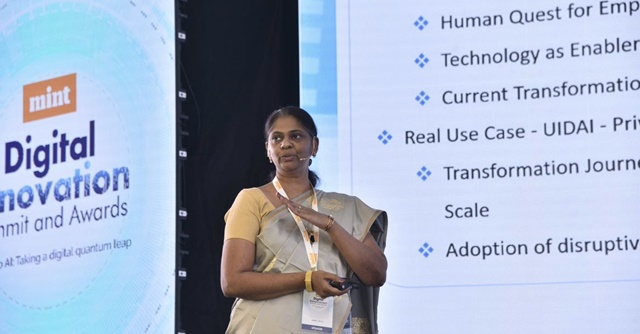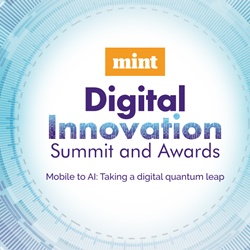
Mint DIS 2023 | UIDAI conducting proof of concept blockchain tests: Annie Joyce


 The Unique Identification Authority of India (UIDAI), a government authority that handles Aadhaar, is currently working on deploying multiple technologies in order to make the pan-India digital identification framework safer than now from cyber threats, and also more transparent. Speaking at the Mint Digital Innovation Summit on 9 June, Annie Joyce, deputy director general at UIDAI, said that among key emerging technologies that the organization is working with, is the Ministry of Electronics and Information Technology (Meity)’s blockchain framework.
The Unique Identification Authority of India (UIDAI), a government authority that handles Aadhaar, is currently working on deploying multiple technologies in order to make the pan-India digital identification framework safer than now from cyber threats, and also more transparent. Speaking at the Mint Digital Innovation Summit on 9 June, Annie Joyce, deputy director general at UIDAI, said that among key emerging technologies that the organization is working with, is the Ministry of Electronics and Information Technology (Meity)’s blockchain framework.
“UIDAI is conducting a proof of concept project for data privacy (with blockchain). This is expected to give users the power to give approval on using or saving their data,” Joyce said at the Summit.
The top official further added that the government authority is also deploying an on-premise private cloud to store their data and process internal artificial intelligence and machine learning projects.

“We are also trying to see what are the different quantum-resilient cryptographic solutions that we have to adapt in the near future. So, we are collaborating and signing memorandums of understanding (MoUs) with academia as well as research and development institutions on niche technologies like blockchain, confidential computing, AI-based fraud analytics, and quantum computing and applications,” said Joyce.
Highlighting why investing in new, emerging technologies would be important, Joyce said, “138 crore people in the country don’t just exist in the physical realm, but also digitally — where every individual’s biometrics are uniquely identified and captured in UIDAI’s databases. Markers like fingerprints and iris are primary biometrics which is captured and sent to the UIDAI database to check one against ‘n’ references to recognise an individual. All of this happens in milliseconds.”
Further, she said that the face of a user has also emerged as an important modality, allowing people to be identified. “I just have to download an app on my mobile and blink into the device, and I will be automatically recognised. This helps with student verification, delivering entitled pensioners’ incentives, among other benefits,” she said.

Joyce concluded by saying that when a technology is taken from lab to production scale, organizations have to adapt to a ‘cultural shift’ in order to adapt to it.
“It means that organizations would need to consider factors like what are the steps to be taken, the skill gaps that have to be filled across organisation, and user experience,” she added.
